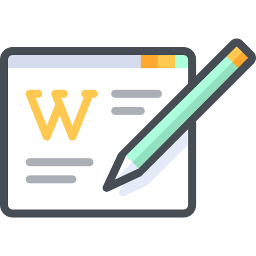Traditional Editing




Living Wills
Curabitur non nulla sit amet nisl tempus convallis quis.
Trusts
Nulla quis lorem ut libero malesuada feugiat porttitor at sem.
Guardian
Vivamus suscipit tortor eget felis porttitor volutpat sapien massa.
Debt Coverage
Vivamus suscipit tortor eget felis porttitor volutpat sapien massa.
Asset Ownerships
Curabitur non nulla sit amet nisl tempus convallis quis.
Business Will
Nulla quis lorem ut libero malesuada feugiat porttitor at sem.
Frequently asked questions
Sed Porttitor Lectus Nibh?
Nulla porttitor accumsan tincidunt. Vivamus suscipit tortor eget felis porttitor volutpat. Mauris blandit aliquet elit, eget tincidunt nibh pulvinar a. Curabitur arcu erat, accumsan id imperdiet et, porttitor at sem.
Praesent Sapien Massa Convallis?
Quisque velit nisi, pretium ut lacinia in, elementum id enim. Lorem ipsum dolor sit amet, consectetur adipiscing elit. Proin eget tortor risus. Nulla quis lorem ut libero malesuada feugiat.
Vestibulum Diam Sit Amet Quam?
Vestibulum ante ipsum primis in faucibus orci luctus et ultrices posuere cubilia Curae; Donec velit neque, auctor sit amet aliquam vel, ullamcorper sit amet ligula. Vivamus suscipit tortor eget felis porttitor volutpat. Sed porttitor lectus nibh.
Nulla Quis Lorem Malesuada?
Pellentesque in ipsum id orci porta dapibus. Lorem ipsum dolor sit amet, consectetur adipiscing elit. Donec sollicitudin molestie malesuada. Sed porttitor lectus nibh.
Lorem Ipsum Dolor Sit Amet Consectetur?
Lorem ipsum dolor sit amet, consectetur adipiscing elit. Pellentesque in ipsum id orci porta dapibus. Pellentesque in ipsum id orci porta dapibus. Vivamus magna justo, lacinia eget consectetur sed.
Address:
1234 Divi St. #1000, San Francisco, CA 94220
Phone:
(255) 352-6258
Email:
Self Editing / Editing Styles




Content Editing
Structural Format.
Tone
Plot
Characters
Theme
Ideas
Line Editing
Language Usage.
Creative Content
Informational Flaws
Accuracy
Sentences Structure
Copy Editing
Details.
Spelling
Grammar
Punctuation
Reasons why your manuscript can get rejected
Mechanical Errors
- Times New Roman.
- 12 Points.
- Double-space.
- 2.5cm Paragraph Indented.
- 2.5cm Margins
- Correct Paper Size (A4 or Letter)
Writer
- Poor Execution
- Writing without practice.
- Telling when you should show.
- Voice
- Match your voice to your theme.
- Plot
- Plot development
- Plot reconciliation
Marketability
- Inappropriately Submitted
- Correct book to the correct publisher
- Audience
- Who is your audience?
- What is the Age Group?
- Niche?
Content
As a Writer
- Are you fragile?
- Are you necrotic?
- To invested?
- Can you let go when it would be advisable to?
- When do you fight for something?
Dialogue Issues
- Dull
- Not real
- Repetitive
Content Editing
Review PDF.
Writing Choices
Target Audience (Demographics [where/who] / Psychographics [when/why])
- Culture
- Language
- Lived Experience
- Trama
- Successes
- Age
- Gender
- Generation
- Ethnicity
- Belief
- Sexuality
Takeaway
- What you want a reader to come away with.
An embedded idea worm that they can articulate - One or two words make a theme, we want a takeaway rather than a theme
- A takeaway is made by a positive statement that the reader takes away with them.
- A subject and a verb
- Not a question, rather it needs to explain what the author believes.
- A takeaway does not have an and or a or a but, the takeaway needs to be a single idea.
Format
Narrative
- Entertainment
- Flow
- Escapism
- The problem of a speech or an agenda in the writing.
- Sending a message carefully
- Bechdel test carefully
- A person’s political point of view has already been shaped by their entertainment.
Thematic
- Learn something
- Solve a problem
- Idea worms that are obvious
- Ease of access for the solution
- Examples
Viewpoint
- Point of View character
- Most common character
- The character who has the most to lose
- The character with the most at stake
- The character that brings the most change
- Who makes the biggest sacrifice
- Who sets things in motion (active protagonist)
- Who has the most happened to them (passive protagonist) [not good]
- Who has the hero’s journey?
- What does your audience like?
- Young Adult POV female is 1st person, POV male is 3rd person.
- Who is your audience, Gripping the Ether
- Already a reader
- Likes SciFi
- Is annoyed by the mandates
- Is freedom over safety
Content Styles
- Story Structure, if Narrative
- Mountain Peak
You can start with a crisis, but it must not be the main one. - Hinge
- Mountain Peak
- Subject, if Thematic
The chapters match the theme - Are you creating a promise then breaking it?
- Tone
Staying true to your tone. - Chapters, Prologue, & Scenes
- Do they Fit?
- Do they move the story forward or delay it?
- Do they contribute to the takeaway?
- Elements of scene
- Point of View (POV) character: each scene needs to be told from one – and only one – character’s point of view
- Goal: this POV character needs to have a scene goal – there should be something this person wants to accomplish or prevent throughout this scene.
- Motivation: there should be a logical reason why this character has such a goal.
- Conflict: this is the tension – every scene should have it. What is preventing the POV character from reaching his/her goal?
- Climax: the high point of the scene – the part where emotions are running the highest and the reader is most engaged
- Resolution: how does the scene end – usually, the resolution should end with some sort of hook – something that makes the reader want to keep going.
- Plot Device
Moving the story forward- The main character that can do it all (overused)
- Relatable via flaws (I use this with Jason)
- Looking in a mirror to show what a character looks like. (overused)
- Blaming bad behavior on bad parents (overused)
- The count down clock (I use this with Nevada)
- It was a dream (overused)
- A magical mentor from a race minority (overused)
- Everything works out, instead of taking them through fire
- Possible necessary characters
- Main character
- Sidekick
- Mentor
- Antagonist
- Villian
- Inconsistency of Character
Is the change of a character progression consistent with the story.
Plot out a character and keep to what you plot - When editing and you change and remove things you have to search for wounds.
- Gaps
- A character that is now a ghost
- Timeline discrepancies
- Are chapters blended smoothly?
- Are the ideas a logical transition?
- Can the takeaway be misinterpreted?
- Write without fear, edit without mercy.
- Can you kill your darling?
Line Editing
Review PDF.
The Characters
- The Weak Character
- That tells instead of shows
Bill is fat. Jane is cruel.- Avoid words that represent emotions, moods, or things.
- Avoid the easiest description.
- That tells instead of shows
- The POV Character
Generally, all characters in a book present themselves in the same voice either 1st or 3rd person. - Character Tense (Present and Past)
Say ‘children ate’ instead of the ‘children have eaten’.
The Author
- Author Intrusion
- Preemptive information.
Little did she know - Information that a person has that is just a fixation of the authors
- Over explaining a thing that is common to the people.
- The author is like a god, present everywhere, visible nowhere.
- Preemptive information.
- Weak Description
- Less is often more, being able to make less more is the art of writing.
- Cliche (Phrases, Plot Devices)
- Simplify the phrases.
- Create a new one.
- Overused troupe (or make it fresh).
- Turn them upside down.
Emphasis
- Achieve proper emphasis
- Put the best word where the brain will see them
- End (. full stop)
- Beginning (Capital letter)
- Middle (, comma)
- The power words.
- The word before the comma.
- The first word of a sentence.
- And very much the last word, before the (.)
- All these words are seen longer by the brain, they have the opportunity to create resonance.
- Using words that show more than tell.
- At all costs never state emotions
- Put the best word where the brain will see them
- Emphasis
- Repetition (but be careful)’
- Short sentences (a break to think)
- Paragraph (5 or 6 lines max)
- Alliteration (repetition of sounds)
- Typography (all caps) use sparingly
- White Space (used for cliff hangers, empty lines)
- Thoughts (italics)
- Word Order (end, Beginning, middle) main emphasis at the end.
- Active vs Passive (doing the action, received the action)
- Passive voice for suspense.
- Stick to active voice.
- Avoid, could have been, had been, by…, was, what is executing the action? Turning your character into the subject of the sentence, rather than an inanimate being the subject.
- Showing vs Telling
- Scene showing
- Narrative summary
- De-emphasizer
- Euphemism (pro-choice/pro-abortion) (passed away/kicked the bucket)
- Overused slang
- Spiraling, the way information is presented, talking around the topic
Dialogue
- Dialogue Punctuation
- “Talking.” Action tag to the talking. (What they did as they spoke)
- “Talking,” Dialogue tag to the talking. (How they spoke)
- Can be written without who is speaking when you have established the rhythm.
- Not a space fill, should always advance the plot.
- Dialogue can carry emotion through word choice, without having to describe it.
- Dialogue is better used to carry information than the information itself.
- The subtext is something that you say without saying it.
- Dialogue is only part of the way you move the plot forward, subtext can be a bigger part.
- Weak dialogue
- Do you mention the person’s name in the dialogue(?)
- Is the dialogue being too expansionary?
- Dialogue rarely presents emotions.
- Are you explaining your character’s motivation through dialogue?
- Do you over-explain your point?
- Good dialogue keeps it real, but not too real.
- Dialogue different by character
- Action tags to help define the character
- Give your characters different agendas in a scene, and the dialogue almost takes care of itself.
- Exposition
- Bad = Info dump
- Bad = Repeated information
- Bad = Stating the obvious
- Exposing your position
- Important information that we need to have to understand the Character world situation
- Good exposition is invisible
- Reveling information via dialogue and subtext
- Implying not explaining
- It is a dialogue, not a monologue
- Mix dialogue with physical action
- Act then explain, causes reading from the reader, entices.
- A new character that gets given information.
Setting
- The setting is another character
- Show as opposed to telling
- Refecting a character’s emotion into the setting
Copy Editing
Review PDF.
Redundancies
- Postpone till later.
- Unexpected surprise.
- The reason was because…
- Fewer words is more.
- Always and forever cut repetitions or recurring redundancies.
Words
- Abstract words
- Avoid mentioning emotions, describe what is happening
Avoid abstract words, love, joy, shock, anger - Shock
- The rumble of the truck was heard as the birds took flight. The lights high in the ceiling swung on their chains as the quake hit. The power went out yet there was too much light in the room.
The windows, like a smile on a beautiful face, were gone, now the building grimaced at the world with a toothless grin, vomiting out her contents onto the road below. - Excessive Modifiers
- Abjectives
- Really, basically, actually, at this point in time
- Read aloud for where your tongue trips on your words.
- Beware of too many modifiers
- Idle words, words that no longer carry meaning
- Great, terrific, awesome, vice, terrible, amazing, manner, nature, manner, nature, type, very, like a, seems to, as though, seemed like, appears to, essentially, there / is was, that, which, basically, ultimately, inevitably, suddenly, um, seemed as though, or any …ly
- Subjective words, too open to personal opinion
- His tee shirt is very nice, (mean nothing)
- The blue of his tee-shirt made his eyeshine
- Precise verbs
- Look long -> stare, gaze, glear
- Look short -> peek, glance
- Throw gently -> toss, bunt
- Drank thirstily -> glug, gulped
- Has -> host,
- Is -> tastes
- Specific Nouns
- Fast, expensive car -> Lambiginie
- Large house -> mansion
- Small, dark, dirty room -> cell, Dungen
- Strange clothes -> hazmat
- Noun / Pronoun order
- Which pronoun to use mentally remove all the other pronouns
- In a group, (his, him, her) than actual (Jason, Julie) then (me, I)
- Thrid person first
- You is always second to last.
- You and Charlie
- Marie, you and Jason
- Subject-Verb Agreement
- A singular object has a Plural verb
- A Plural object has a singular verb
- Homonyms
- Effect – noun – the result
- Affect – verb – to influence
- It’s – contraction – it is
- Its – possession
Diction
- Short concrete words
- Familiar words
- Contractions (don’t can’t won’t)
- Know your audience
- There is only one word that will express what you want to say.
- Sayings something complex in a simple manner is art
